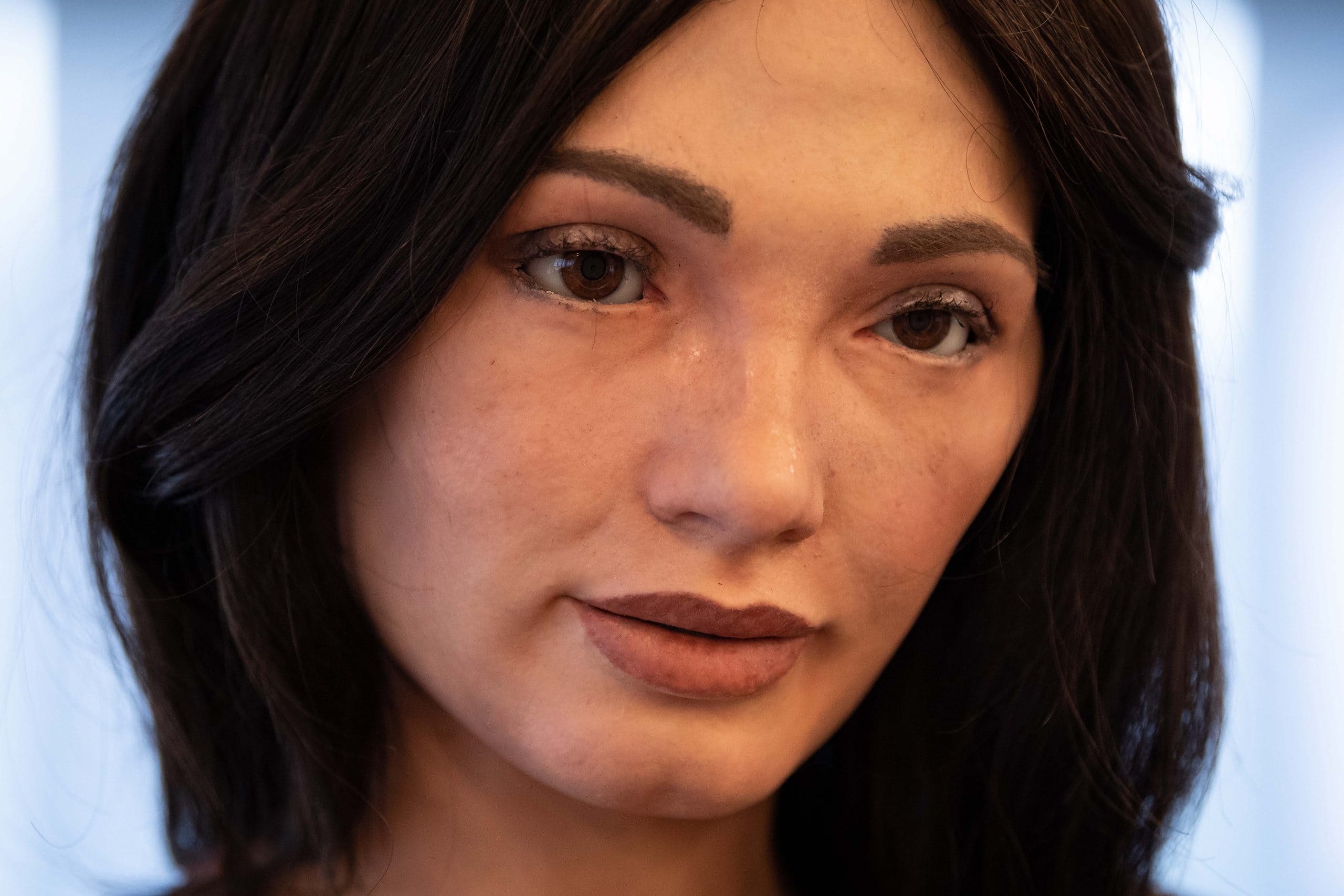
Whilst many are still grappling with the release of the recent James Bond film, a real-life spy story of a different nature unfolds…

The world’s first humanoid AI artist, Ai-Da, was detained by Egyptian authorities, who thought she was being used to hide covert spy equipment.
Officials held the robotic artist – who is named after the British mathematician Ada Lovelace – for 10 days, delaying her arrival in Cairo where she is taking part in an exhibition.
The UK Embassy in Cairo said in a statement that it was now ‘glad to see that Ai-Da the artist robot has now been cleared through customs.’
‘Customs clearance procedures can be lengthy and are required before importation of any artworks or IT equipment,’ it added.
To help with clearance, the robot’s creator, Aidan Meller, offered to remove the robot’s modem, but said he could not remove its ‘eyes’ (cameras), which were also treated with suspicion, as these are essential for Ai-Da’s ability to paint.
‘I can ditch the modems, but I can’t really gouge her eyes out,’ Meller told the Guardian.

Ai-Da with Adian Meller (left) and the Director of The Design Museum, Tim Marlow (right). (Photo by Tim P. Whitby/Getty Images)
Ai-Da is now able to be showcased at the Forever is Now exhibition, which is the first exhibition to be displayed at the Giza pyramids for 4,500 years. It runs until 7th November.
The humanoid artist, who was first built in 2019 with drawing technologies developed at the University of Leeds, can draw portraits of people and animals as seen from an in-built camera.
She was displayed at the Victoria and Albert Museum for the London Design Festival last month.
Her work represents yet another expanding use of technology within the art market, which notably includes the use of NFTs as a means of art collection.
Earlier this week, the first sensory auction was held in New York, which used ‘neuro-aesthetic technology’ to determine the bidder who had ‘the most impassioned response’ and would therefore receive and pay for the art.

